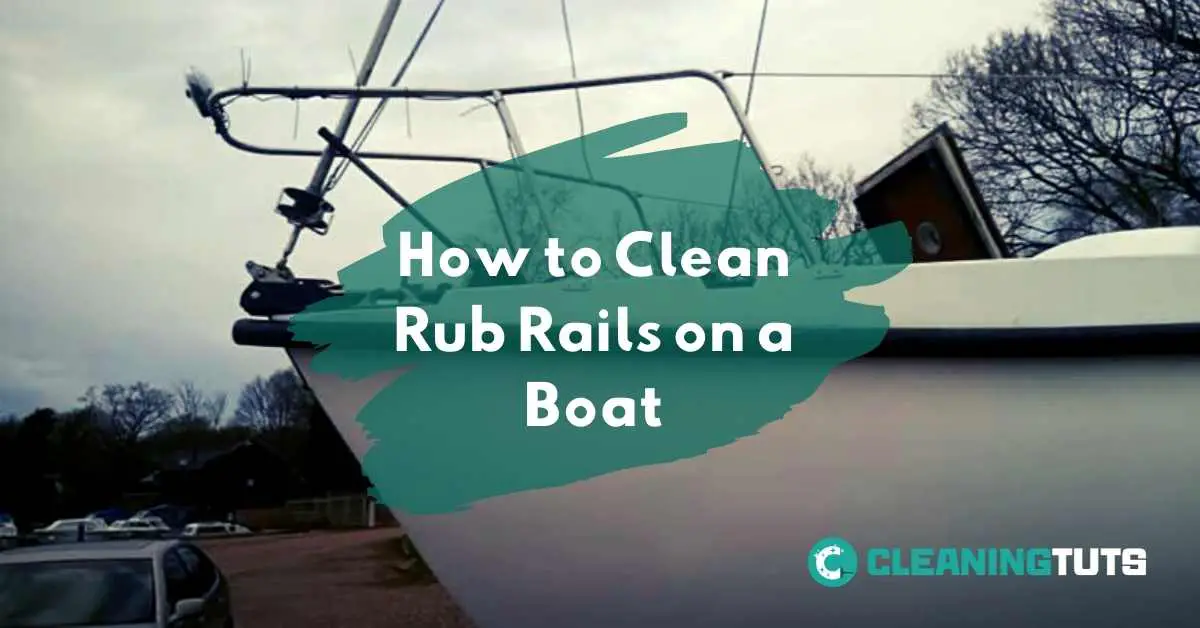How to Clean Rub Rails on a Boat?
If you want your boat to be functioning and well maintained, keeping the rub rails clean is necessary, but how to clean rub rails on a boat?
There are simple ways that your rub rails can be looked after. Giving the rub rails a gentle wipe away with soapy water for basic scuff and scratch can get the job done. You can also use recommended rub rail cleaners, but that’ll cost you some cash, which is fine as long as you want to invest in those.
So, through this article, we’ll discuss how you can rub rail on your boat and keep it good as new for any water ride.
Where is the Rub Rail on a Boat?
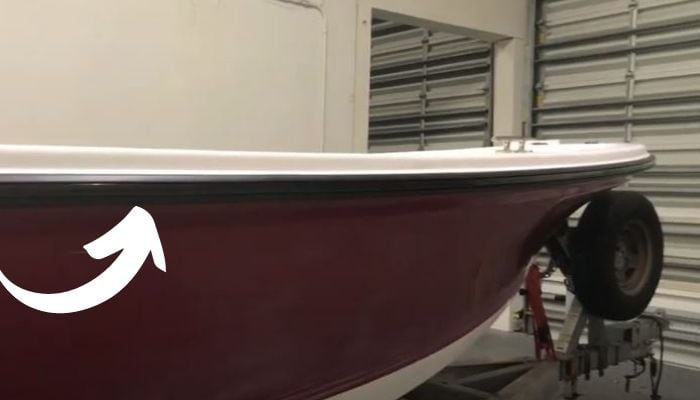
It is an extensive and long joint that goes all around the boat connecting from the dull to the deck. Boat hulls get wider as the boat’s height, known as the flare, increases, and rub rails sit on the widest part of the boat. Since the rub rail is high up there, it absorbs most of the impact when the boat comes in contact.
What is the Rubber Around the Boat Called?
“A rub rail hides the joint between a boat’s deck and hull, thus accentuating the sheerline. On a practical note, it serves as a buffer between the boat and pilings, seawalls, and other objects. Hence the name, rub rail,” answers Cryptowithroshani, a Quora user, in a question
There are a few different reasons for rub rails to exist. When a boat comes in contact, the rub rails are the first to impact and absorb its shock. It serves as a connector from dull to the deck while providing a visual appeal for concealing the joint of the two.
Rub rails also accentuate the shoreline since it sits high up on the boat. It is a two-part fixture, including the rail and the insert. The rail is attached to the boat itself, secured with screws and rivets. In comparison, it inserts slides in or clips onto the rails themselves. Rub rails typically end at the transom, the vertical end at the back, or the rear end of the boat.
How Can I Keep My Boat Looking New?

“You will need a cup of bleach with chlorine, ¼ more or less with mild soap of neutral pH and water, brush with force with the brush of soft bristles to avoid scratching or leaving a mark. For the metal parts, you can use polish, always directly after removing the salt,” says Cleaning Tips and Tricks, a Quora user, in an answer
We wanted to keep our favorite toys looking nice and fresh for as long as possible when we were kids. It is only obvious to want to keep your boat looking new, clean, and fresh for as long as possible now, more so since this very boat is also a version of your toy, except it’s for the elder, grown, and matured version of you.
Keeping the Boat Nice, Clean and Tidy
Implementing the basic idea of cleanliness is important, whether at your home or your boat. You must keep your water transport clean for it to be usable. Since boats are enduring both the scorching sun and the warm damp water, keeping the boat’s interior nice, cool and cozy makes the weather’s heat tolerable.
Cleaning the Exterior of the Boat
Before you enter a boat, you see its hull first from afar. This is what gives the rider the first impression of the boat. If the hull were to be dirty and textured, naturally, any rider would hesitate to enter.
Since the hull is always submerged, it accumulates somewhat growth of marine life on the hull. If left uncleaned for a period of time, the marine growth on the hull will eat away at the boat, causing “Blisters,” a term used to define water seeping into fiberglass, separating the laminate from the fiberglass.
Keeping Up to Date with the Speed
One way to ensure your boat isn’t losing its speed is to ensure its hull is clean. “Fouling” expresses marine growth on the boat’s hull.
Fouling progression depends on your location, how often the boat is used, native species in the fouling community, and the season.
The more the fouling progression on the hull, the more abrasive tools are required to clean it off, which may not be ideal for the most part.
Keeping up with your engine is also the most obvious and definitive part of the speed of a boat. The three types of engines for boats are outboard, inboard, and sterndrive. You must know the type used for your boat in order to care for it.
Checking in on it monthly and keeping it clean and smooth running can significantly maintain the well-being of your vehicle.
How to Reinstall the Rub Rails on Your Boat?
Since the boat has somewhat curvature, you will require more rub rail than expected. It is recommended that before you begin with the project, you have all the necessary tools and measurements done.
Removing the Rails
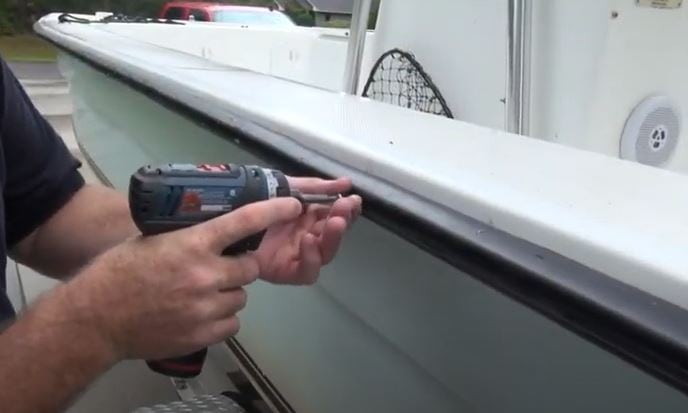
Removing the rails from the boat should be an easy task. Taking off the screws and bolts using the right type of screwdriver and prying them open with a flathead screwdriver should help remove the rails. But it’s also important to make sure that you have another person present with you as it is a two-person job.
Removing the Insert
Once the top rail is off, you’ll need the flathead screwdriver again to scrape and pry off the inserts. It can be a bit of a sticky job, but it should come right off with consistent pressure and a steady hand.
Wiping Away Residue
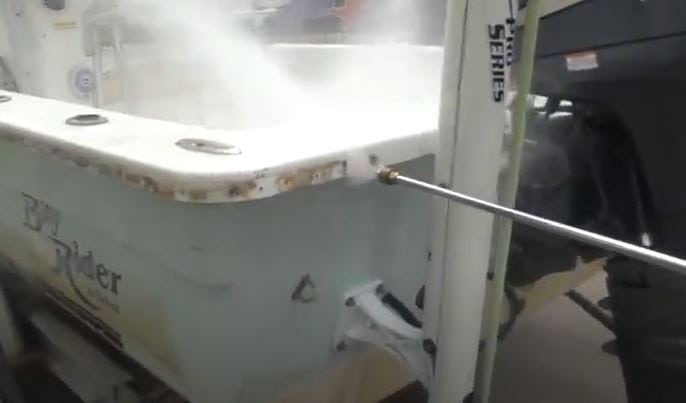
After removing the insert of the rub rails, you’ll be exposed to the bottom rail, which you can remove the way you did with the first rail on top. Once the bottom rail is also removed, some residue of glue, dirt, and marine life will be left on the boat. This is the part that requires a bit of your strength and a whole lot of elbow grease.
How to Remove Scratches Off of the Rub Rails?
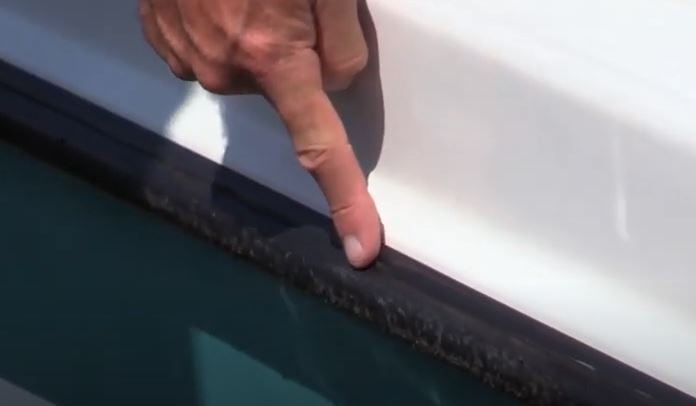
Keeping scratches and scuff off the rub rails is a time-consuming task. Some easy and doable ways are mentioned down below –
Soapy Water
You can use soapy water and a gentle microfiber cloth to wipe the built-up and rough edges for basic scuffs and scratches.
Using WD 40
It is not typically recommended for boats; it can potentially be used if the scuff and scratches on your boats are a little heavier. The heavy thick mildew and marine growth that builds upon the surface can be cleaned away with this cleaner and leave a nice shine and clean surface.
Wrapping Up!
We have discussed a few possible ways to keep your water transport nice and clean and ready to use for a nice, bright and sunny day out in the open ocean or sea or lake.
Since It is crucial to keep your boat well-maintained not only for your safety but also for the safety of the marine life beneath you. When it comes to cleaning a lower unit, there are several things you have to take into consideration and we’ve got you covered on that part as well.

